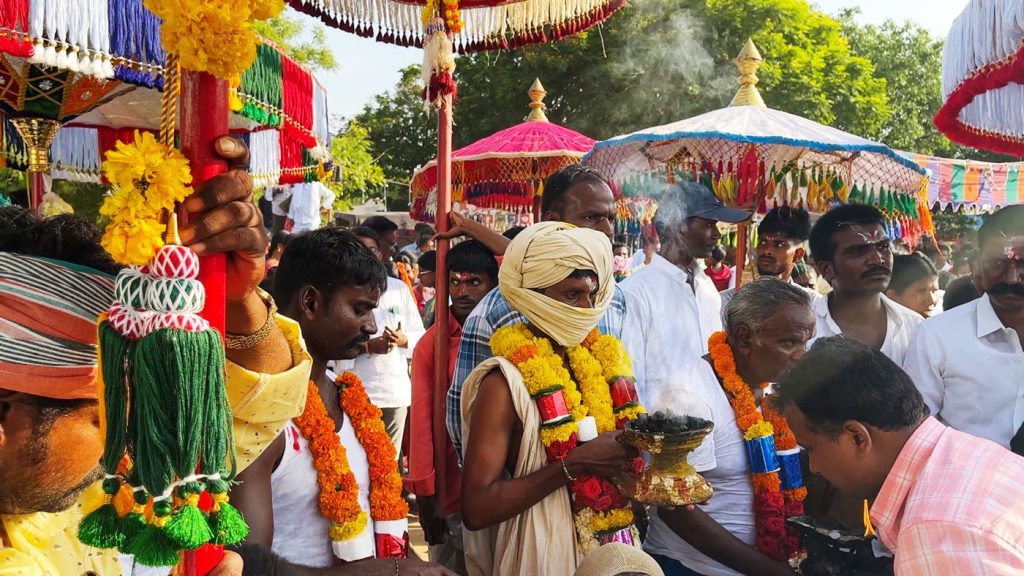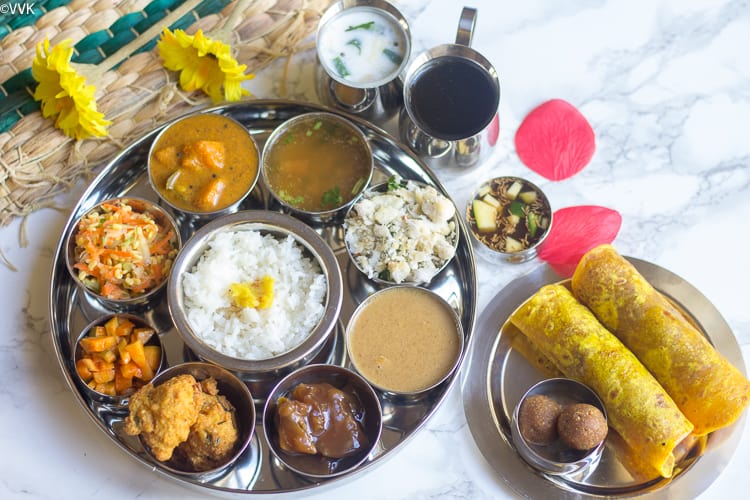What is Ugadi?

Ugadi 2025 celebrates the start of the Hindu New Year, celebrated in the states of Andhra Pradesh, Telangana, Karnataka, and Goa in India. The word Ugadi is derived from ‘yuga’ (age) and ‘adi’ (beginning), meaning ‘the start of a new age’ in Sanskrit. It usually falls around March or April, which holds historical and cultural value for Hindus. Celebrated under different names such as Gudi Padwa in Maharashtra, Ugadi in Andhra Pradesh and Telangana, and Yugadi in Karnataka, it has stood the test of time. The traditions include drawing colorful floor designs on Muggulu and Rangoli; decorating the entrance with mango leaves called torana; exchanging gifts; making donations; taking oil baths; preparing and offering the special dish called pachadi; and visiting the Hindu temples. According to Telugu and Kannada Hindu rituals, pachadi is a dish that has a composition of six tastes representing acceptance of all aspects of life in the year ahead.
Significance of Ugadi 2025:

Ugadi has cultural and spiritual significance:
- On this day, it is said that Lord Brahma created the universe, and thus time began.
- The festival celebrates new beginnings and spring’s long-awaited arrival.
- The day also signifies the beginning of the Shalivahana calendar, largely accepted in South India.
Ugadi brings about self-analysis, target-setting, and welcoming a considerable amount of positivity for the impending New Year.
History of Ugadi:
Ugadi is derived from the word Yuga in Sanskrit, which means age, and the word dAdi, meaning beginning. Ugadi means the beginning of a New Age and is referred to as the New Year in Andhra Pradesh, Telangana, and Karnataka, and symbolizes the New Year in the Shalivahana calendar.According to Hindu mythology, it’s believed that on this day Lord Brahma created the universe, signifying the commencement of time. This day is also believed to have witnessed the introduction of days and months and years into the motion of the planets, thus giving rise to the whole concept of timekeeping.Ugadi is of historical importance to Emperor Shalivahana, who, it is believed, quelled the Sakas and founded his own rule from then onward, thus commencing the Shalivahana Shaka era. This calendar is currently followed predominantly in Southern India, where Ugadi serves as the new beginning for it.Ugadi marks the beginning of spring, the tradition of the harvest, and thus conveys newness, abundance, and spirit. To Hindus living in Southern India, this is among the most important festivals.
How Ugadi is Celebrated?

1.Cleaning and Decoration of the House:
Homes are cleaned and decorated with mango leaves and colorful rangoli to welcome prosperity.Consecration of the Panchanga Shravanam (The New Year Prophecy).The astrologers consult the Panchangam (Hindu almanac) to foresee the good and bad fortunes for the year.
2.Ugadi Pachadi – The Symbolic Dish
This dish consists of six flavors-sweet with jaggery, sour with tamarind, bitter with neem, spicy with chili, salty, and tangy with mango.This whole experience symbolizes the various emotions of that life and teaches one to accept it with balance.
3.Visiting Temples & Praying
Devotees visit temples for blessings and prayers for prosperity in the coming year.Festive Special Dishes.The feast may include Pulihora (tamarind rice), Bobbatlu (sweet flatbread), and Payasam (kheer).
Ugadi 2025 Date & Muhurat
Ugadi – Sunday, March,30 2025
Pratipada Tithi Begins – 04:27 PM on Mar 29, 2025
Pratipada Tithi Ends – 12:49 PM on Mar 30, 2025
2025 :Special Dishes made on Ugadi

Ugadi is a festival of joy and prosperity, and food plays a significant role in the celebration. Families will prepare various traditional dishes that symbolize the flavors of life. Some of the most popular dishes made on Ugadi include:
- Ugadi Pachadi
The most iconic dish of Ugadi, made with six items-jaggery(sweet), neem(bitter), tamarind(sour), raw mango(tangy), salt, and chili(spicy).This mixture symbolizes the myriad emotions associated with life—happiness, sadness, anger, fear, surprise, and disgust, thus teaching the importance of accepting every feeling.
- Pulihora (Tamarind Rice)
A rice dish flavored with tamarind, mustard seeds, curry leaves, and green chilies.It symbolizes prosperity and abundance since the use of turmeric in the dish is auspicious.
- Bobbatlu / Obbattu / Puran Poli
A type of sweet flatbread stuffed with chana dal(cooked split chickpeas), jaggery, and cardamom.It is a festive delicacy savored in various regions under various appellations.
- Mango Pickle & Raw Mango Rice
With Ugadi marking the beginning of mango season, raw mangoes are turned into dishes like mango pickle and mango rice.
- Payasam/Kheer
This sweet, creamy pudding made with rice, milk, jaggery or sugar, cardamom, and dried fruits represents sweet beginnings and the prosperity of the new year.These dishes have infused Ugadi with a feast for the senses, journeying together with families in joyous celebration.



